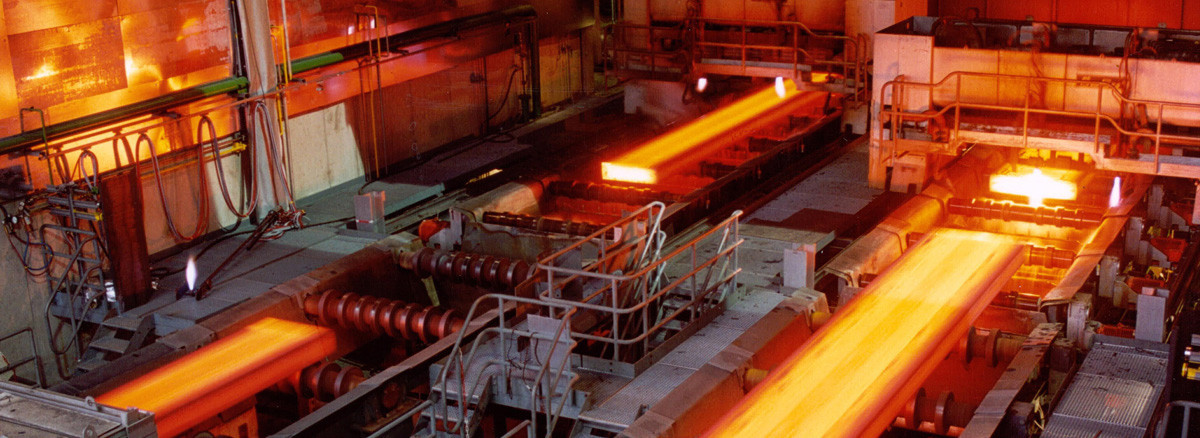Metallurgical industry
Depreciation of process equipment can be a serious problem for metallurgical enterprises. Technological processes in such production imply high temperatures, aggressive chemical environments and interaction with abrasive materials, which leads to accelerated equipment wear. Reasons why wear can cause a problem in steel mills include:
Abrasive materials. Metallurgical processes are often associated with the processing of abrasive materials such as ores, metal oxides and refractories. The continuous flow of these materials through the equipment can cause erosion and abrasion, resulting in surface degradation and loss of equipment integrity.
High temperatures. Metallurgical processes require operation at elevated temperatures, which can lead to thermal stresses on equipment. Thermal cycling, thermal expansion, and differential heating and cooling can all contribute to material weakening, cracking, and fracture.
Chemical reactions. Metallurgical processes involve exposure to aggressive chemical environments, including acidic or alkaline solutions, corrosive gases, and molten metals. These chemical reactions can cause corrosion, oxidation and chemical deterioration of equipment components, reducing their efficiency and service life.
Mechanical loads. Steel plant equipment can experience significant mechanical stress such as shock, vibration and mechanical stress. Such exposure over time can lead to fatigue, cracking and deformation of equipment components.
Process variability. Metallurgical processes can vary in raw materials, process parameters, and operating conditions, which can affect the wear characteristics of equipment. Depending on the variability, certain equipment may be subject to increased wear, requiring appropriate wear protection measures.
The impact of wear at a steel plant can adversely affect production efficiency, equipment reliability and maintenance costs. Excessive wear can lead to unplanned downtime, reduced productivity, and increased replacement or repair costs. Therefore, implementing effective wear protection measures is critical to minimizing the impact of wear and extending equipment life.
By using wear-resistant materials, coatings and lining systems, and by implementing maintenance and monitoring programs, steel mills can mitigate the effects of wear and improve the overall performance and life of their equipment. Regular inspection, maintenance, and timely replacement or repair of worn components are important methods for ensuring trouble-free operation and minimizing costly failures.
There are several effective ways to protect process equipment from wear in metallurgical production, which are associated with the use of modern wear-resistant materials and technologies. The main methods include:
1. Overlay welding technology, which is an effective and widely used method for protecting process equipment at metallurgical enterprises. It involves applying a layer of wear-resistant material to the surface of equipment components using welding techniques. The coating material is typically a high strength alloy with excellent wear and abrasion resistance. Overlay welding can be applied to a wide range of equipment components including chutes, hoppers, buckets, screens, liners and pipes. It offers versatility in terms of shape and size as the coating material can be tailored to suit specific geometry and equipment requirements. This flexibility provides effective protection for various types of equipment and critical wear areas.
Thus, overlay welding is an effective and optimal method for protecting the technological equipment of a metallurgical enterprise. It offers versatile and customized solutions to protect equipment from abrasion, increase equipment life and improve overall productivity. By selectively targeting high wear areas, it provides an economical approach to minimizing downtime and maintenance costs.
2. The use of fused cast basalt for the protection of technological equipment of a metallurgical enterprise can be a highly effective method due to its unique properties and advantages, among which it is worth highlighting: abrasion resistance, impact resistance, corrosion resistance, thermal stability, and versatility. Cast basalt can be used to protect a wide range of equipment in metallurgical plants, including: troughs and funnels, cyclones and separators, pipes and fittings, various tanks and vessels, elements of furnaces and smelters, mixer blades and agitators. Specific applications for cast basalt will depend on factory processes, equipment requirements, and emerging wear issues.
3. The use of high-alumina ceramics for the protection of technological equipment of a metallurgical enterprise can be highly effective due to its exceptional properties, among which wear resistance, stability at high temperatures, corrosion resistance, and electrical insulating properties are of decisive importance. High-alumina ceramics can be used to protect various types of equipment of metallurgical enterprises, including:
- Furnace lining. High alumina ceramics can be used as a refractory lining in kilns, kilns and other high temperature equipment to protect against thermal wear and chemical attack.
- Burner nozzles. High-alumina ceramics can be used as burner nozzles in combustion systems, providing resistance to high temperatures, thermal shock and chemical corrosion.
- Protective tubes for thermocouples. High-alumina ceramics can be used as thermocouple protection tubes, providing thermal insulation and protection against corrosive gases or molten metals.
- Crucibles and ladles. High-alumina ceramics can be used for lining crucibles and ladles for melting and processing molten metals, providing heat resistance and chemical inertness.
- Air ducts and pipes. High-alumina ceramics can be used as lining of air ducts and pipes carrying corrosive gases, liquids or abrasive materials.
- Wear-resistant linings and plates. Oxide ceramics can be used as wear liners and plates in a variety of equipment including chutes, hoppers, crushers and mills to resist abrasion and impact loads.
